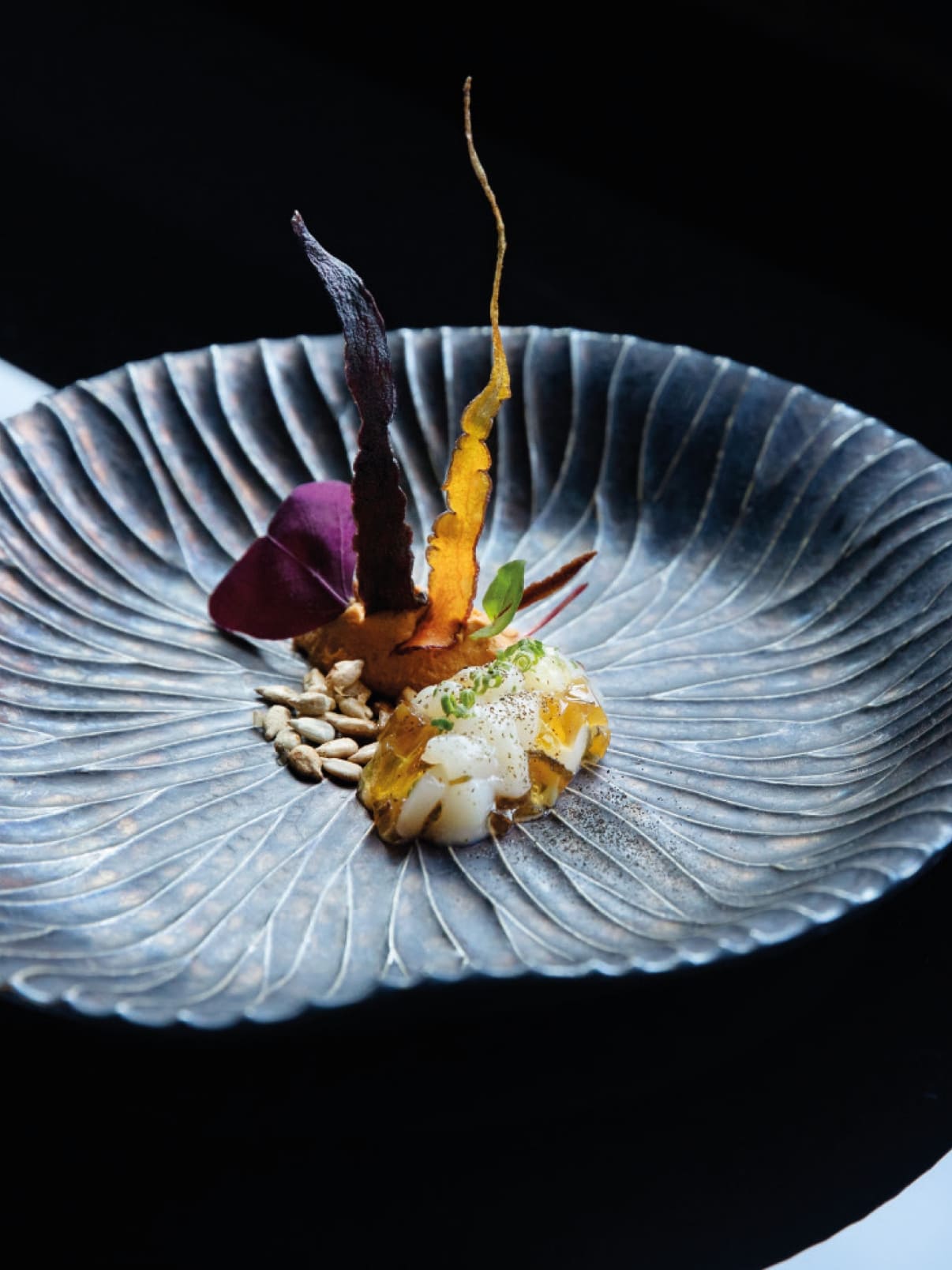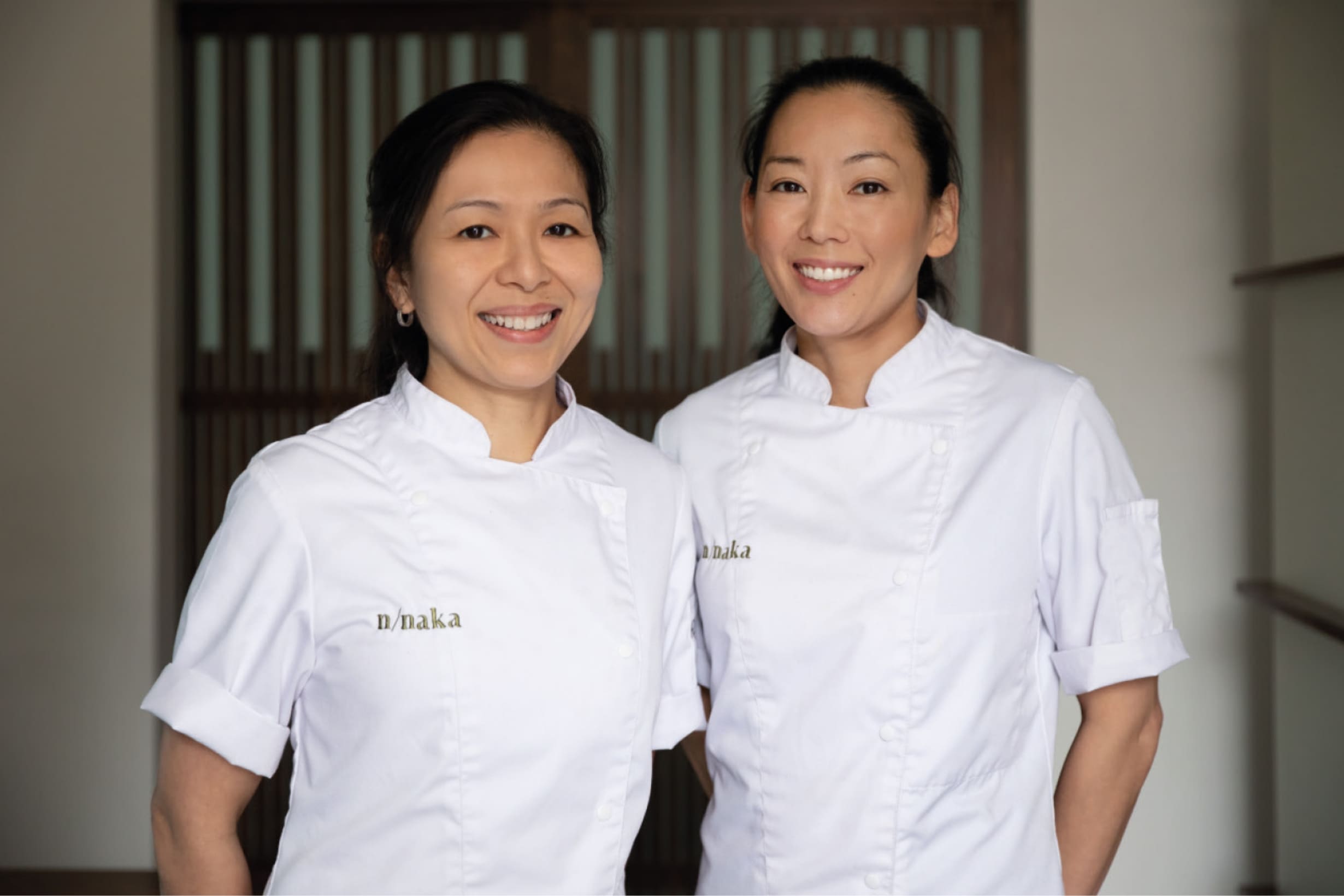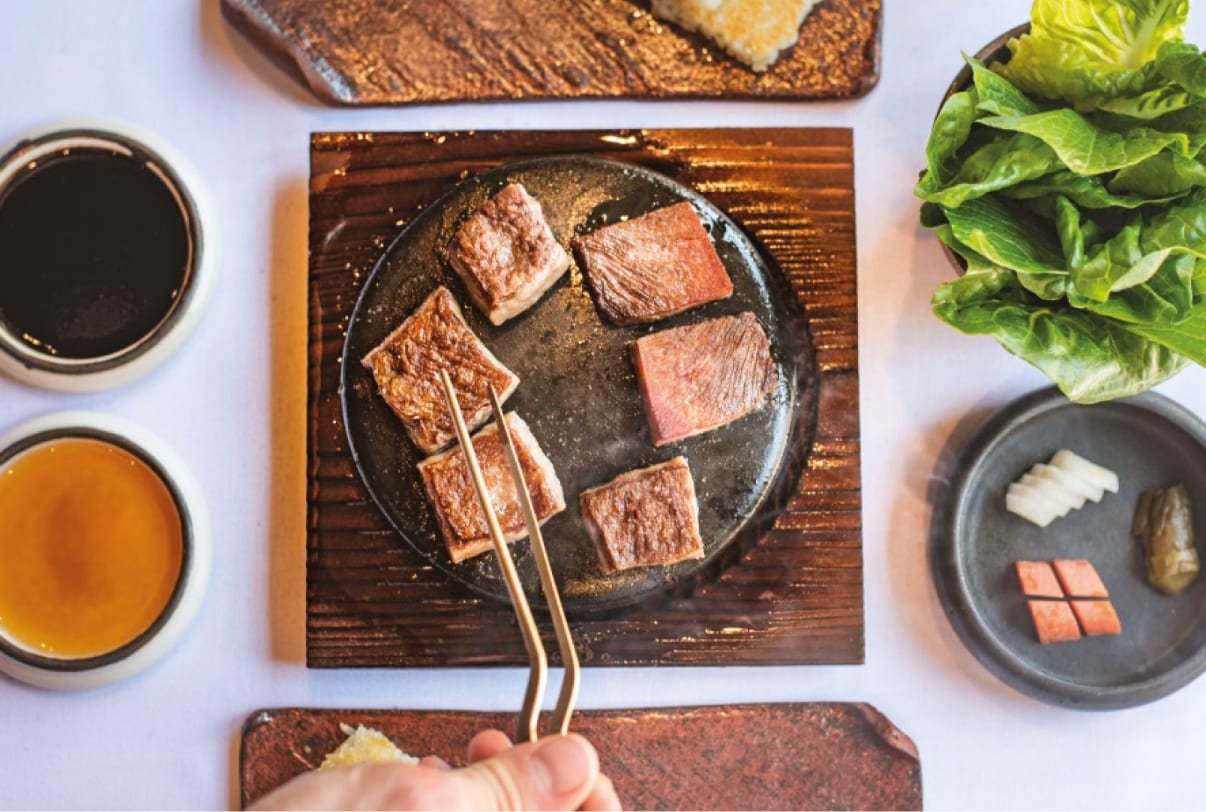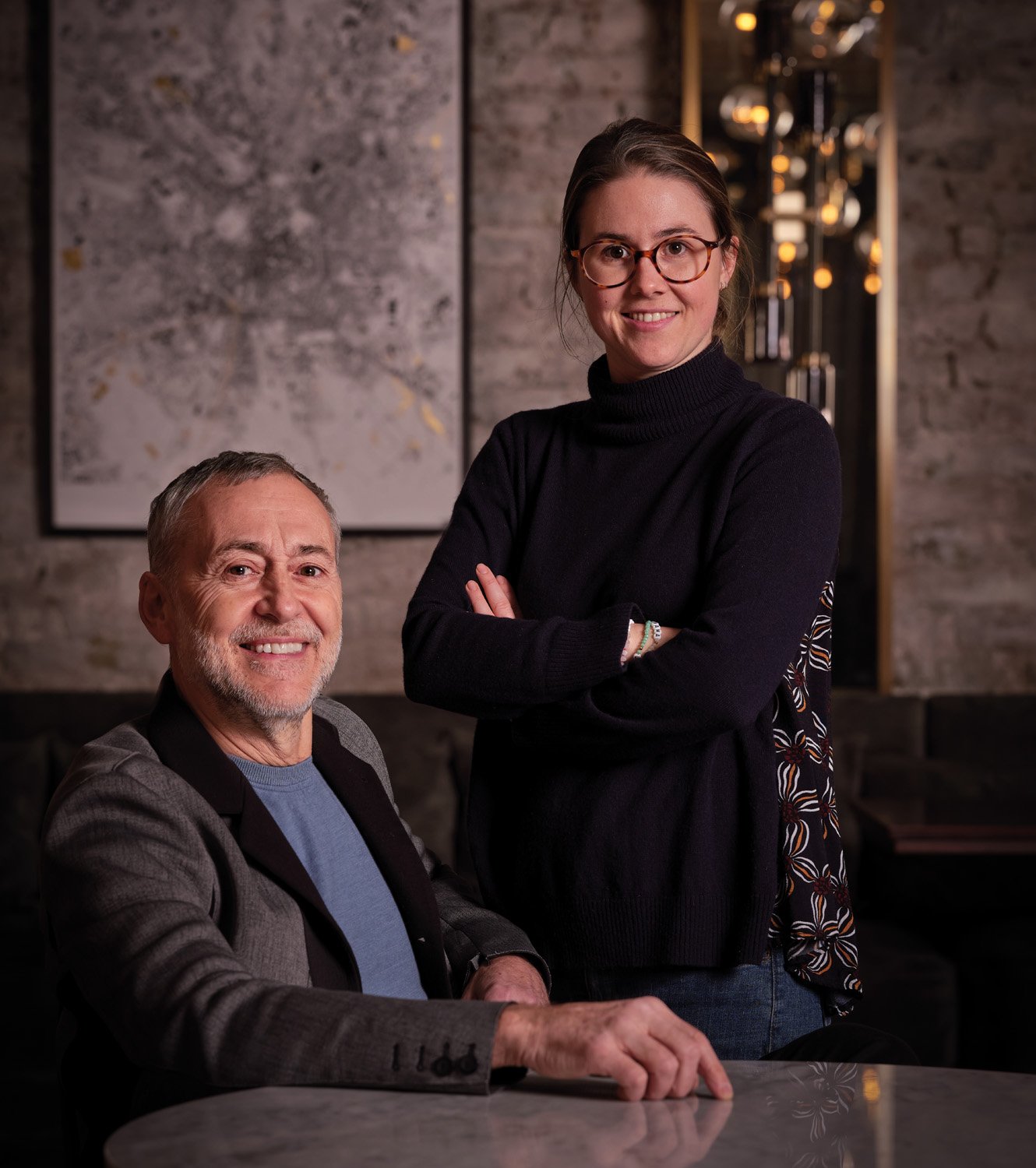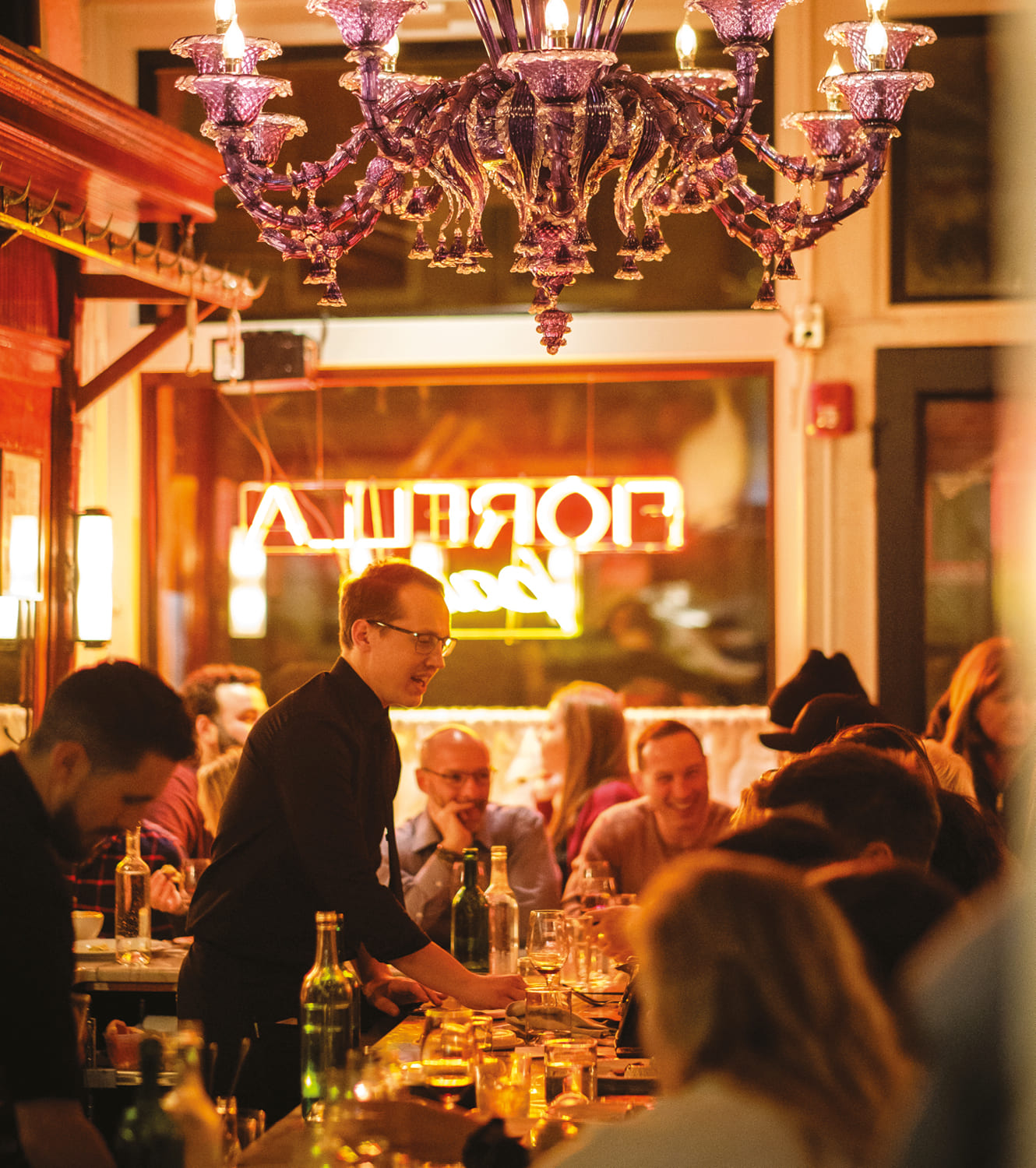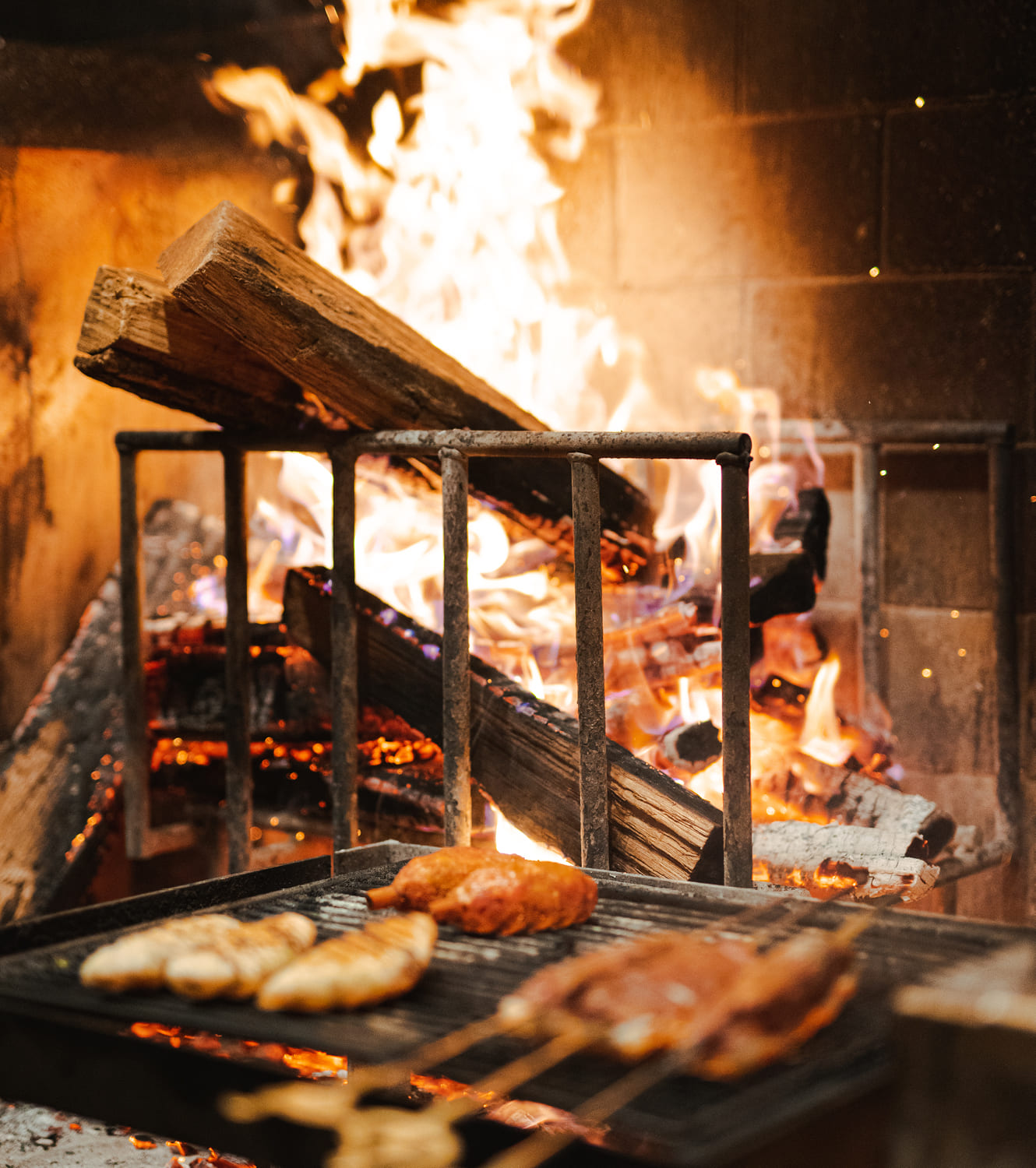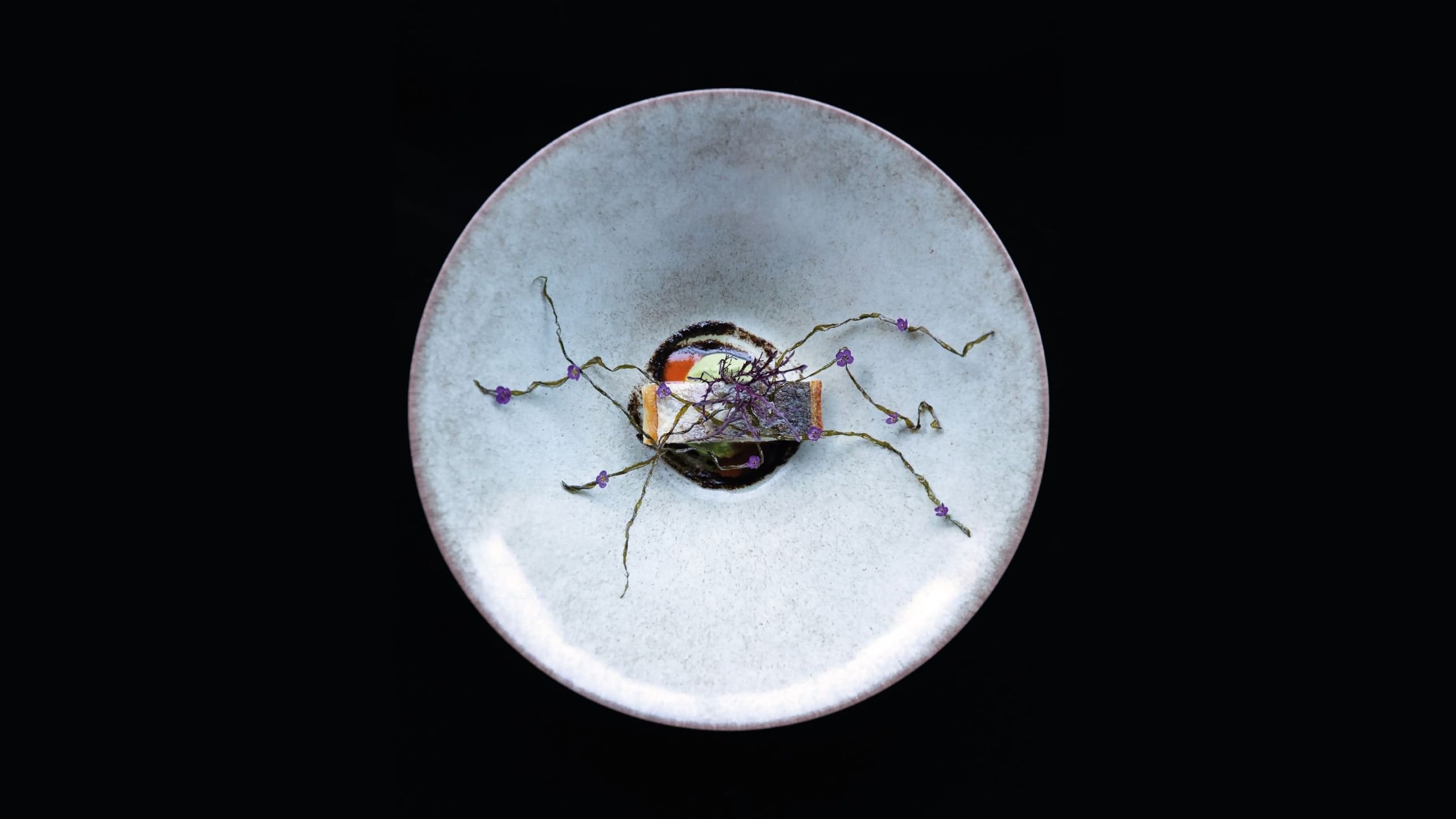
EAST MEETS WEST
The versatility, acidity and delicacy of Old World wines can help bring out the best of traditional Japanese ingredients. Virginia Miller speaks to a panel of Michelin-starred chefs
Japanese food is a world of varying regional dishes, from izakaya pub fare to sushi, wagyu beef to soba, udon or ramen noodles. The pristine ethos and seasonality of cooking in Japan – such as artistic kaiseki menus balancing flavor with color and texture – yields some of the most impeccable dishes in any culture. All these can be enjoyed with a glass of local sake, of course, but Old World wines can be just as ideal a pairing – even if selecting them takes more thought than simply going for Japan’s national drink.
Sushi and sashimi pair with many wine styles, whether crisp, high-acid whites like Grüner Veltliner or a mineral Chablis. Tuna can work with light-bodied reds, while salmon, trout or arctic char can sing with rosés. Grilled meats (from yakitori to katsu) can play with a range of reds. Soups, mushrooms and umami-forward dishes partner beautifully with fortified wines such as sherry or madeira.
At Los Angeles’ two-Michelin-starred restaurant n/naka, Japanese-American chef and owner Niki Nakayama serves modern Japanese kaiseki, a culinary art she trained on at a ryokan in Japan. While Nakayama calls on her trusted team of drink experts, she explains their pairing ethos: “Old World wines work well with Japanese food because they tend to be more transparent expressions of grape varietals; grapes that are grown where they were discovered or planted over long stretches of time. The noble varietals – Chardonnay, Pinot Noir, Riesling – have been cultivated according to their terroir and lineage, and (with the producers we prefer) are not so much grown with an eye to ripeness and alcohol. They tend to be more refined, thanks to a long history of cultivation and respect for terroir and the grape itself.”
at n/naka chef and owner Niki Nakayama serves modern Japanese kaiseki. ©Stan Lee and Zen Sekizawa
She finds this philosophy kindred with Japanese cooking: “This has parallels to Japanese cuisine in that ingredients are treated with the utmost respect, and the technical aspect of cooking is in service to bringing out the very best character of the ingredient itself.”
So why choose wine over sake? “Acidity, and delicacy,” she expounds. “For example, in courses like modern zukuri and otsukuri, sashimi is traditionally so well-served by sake. Some wines would obscure the delicate and particular flavors of sashimi. What we strive for is a mix of traditional pairings, be it wine or sake, providing balance or matching flavor intensity when needed, and above all else never overpowering the ingredients.”
Nakayama’s captain, Emily Kang, elaborates: “We use Champagne, or Old World sparkling wines, for sakizuke and zensai [appetizers] to awaken the palate and provide a dry, bright, lightly fruity foil to play off the balance of flavors. Since n/naka is primarily a seafood restaurant, Champagne and Old World sparkling wines pair very well thanks to their versatility.”
At the recently Michelin-starred Nisei in San Francisco, chef David Yoshimura expresses his unique take on modern Japanese washoku via tasting menus as a second-generation Japanese-American. “When creating dishes that pair with Old World wines, generally we like to lean on more subtle or obscure flavors with fish as a protein. Luckily, in Japanese cuisine, there is fish present in almost everything, which pairs extremely well with Old World white wine,” he says. “At Nisei in particular, we are located in San Francisco where the cuisine tends to be high in acid. Combining these high acid preferences with Japanese cuisine always points us towards Old World wines.”
“Old World wines work well with Japanese food because they tend to be more transparent expressions of grape varietals”
at Nisei in San Francisco, chef David Yoshimura (pictured with sommelier Ian Cobb) expresses his unique take on modern Japanese washoku paired with Old World wines. ©Brianna Danner
Nisei general manager and sommelier Ian Cobb further explains: “We recently added a sake pairing to the menu so I am happy to share that I no longer have to decide between wine and sake. That said, when I have chosen wine over sake, it hasn’t necessarily been about the pairing itself but about breaking the mindset that we believe a lot of guests have that Japanese food is traditionally paired with sake. As much as we are a Japanese restaurant, we are also second-generation washoku cuisine and want to show how wines can complement both traditional and modern cuisine.”
“When I choose a wine over a sake pairing,” says Cobb, “the first thought I always have is that there is a perceptible sweetness with sake. No matter how dry the sake or how savory.
I find it, there is always a twinge of sweetness on the palate.” He feels that sometimes this element can exaggerate the sweetness of a dish in perhaps a negative way, since sugar is a common ingredient in most sauces used in savory Japanese cooking.
He explains: “Dry red wines can accent savory profiles and elements of pepper, salt, meat and smoke, while grapes grown near the ocean, like Albariño and Assyrtiko – or on marine soils, like Chablis – can pick up saline qualities that pair perfectly with our seafood dishes. I do not find that sake falls short in any of these cases and I’m sure there is a perfect sake for every dish, but beverages are like a toolbox and the more tools you have, the more opportunity you have to get the job done correctly.”
Alternative dining options to explore pairing Japanese food with wine as well as sake: Uni in Boston and Uchi in Austin.
We recommend
FRENCH CONNECTION
At Le Gavroche, Michelin-starred chef Michel Roux explores the potential of tasting fine French dining with a sip of sake
PHILADELPHIA STORY
Set in a former butcher shop in the melting pot that is South Philly, Fiorella is a temple to pasta and wine that celebrates both simplicity and authenticity. John Irwin pays a visit
A PERFECT BLEND
Chotto Matte specializes in Nikkei cuisine, a Peruvian and Japanese invention shaped by movement and migration. But how to pair with wine? Nargess Banks sits down with the founder, Kurt Zdesar, to explore
SEE WHY ALBI’S SPIRITED WINE LIST COMPLEMENTS THE COMPLEX LEVANTINE CUISINE
At Albi, the heady atmosphere and complex Levantine dishes are matched by a cheeky wine program laced with obscure references to songs, books and films as David White discovers

